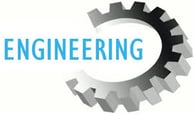When you are beginning the process of engineering a data collection platform, one of the most important steps is to utilize the barcode symbologies that best fit your requirements. Here are some items for your team to consider when determining which symbologies to use:
important steps is to utilize the barcode symbologies that best fit your requirements. Here are some items for your team to consider when determining which symbologies to use:
- How much data do you need to collect, both now and in the future?
- How much space is available to print the barcode?
- Is the printing of the barcode in a strictly controlled environment?
- How many symbologies can you support?
After considering each of the factors above and the information provided below, your team should be well on its way to finding the best solution set for your application.
Each barcode symbology has its own set of benefits and drawbacks. Many applications will be designed to accept multiple symbologies, but necessarily limit the types of barcodes that are accepted. This can usually be controlled by a setting that is programmable into your barcode reader.
Here are some examples of the most commonly used barcodes.
Common One Dimensional Barcodes
One-dimensional or linear barcodes are the original types of barcodes and include some of the most commonly seen codes. 1D barcodes are built by varying the width of the lines and spaces on the barcode. 1D barcodes can be read by both 1D and 2D scanners. Common 1D barcodes now in use include:
UPC CODE
The UPC code is the most common barcode symbology in use primarily due to its use in the U.S. retail market. This was the original barcode symbology that was introduced to the retail environment in 1974. The UPC code consists of 12 individual characters and can be printed at various densities. UPC only supports numeric characters only.

CODE 128
Code 128 is a type of code geared toward non-POS products, such as test tube vials or reagent cartridges. A large benefit to Code 128 is that it can support the entire ASCII 128 character set, making it a very powerful barcode. Code 128 is one of the more compact 1D codes commonly used.

CODE 39
Code 39 barcodes (or Code 3 of 9) are used to label goods across many industries and is commonly used by the US Department of Defense. A major benefit to Code 39 is that it allows for encoding of both characters and digits. Originally capable of 39 characters, it has since been expanded to support 43 characters.

INTERLEAVED 2 OF 5
If your application requires a high degree of printing tolerance Interleaved 2 of 5 (ITF) is a good barcode to consider. ITF barcodes encode 14 numeric digits and use the full ASCII set.

CODABAR
Codabar barcodes are commonly used by healthcare professionals, including U.S. blood banks. Its main benefit is that it is easy to print and can be produced by any impact style printer, even a typewriter. Therefore, a user can create many Codabar codes using consecutive numbers without the use of a computer. It was designed to be readable when printed from dot matrix printers for multi-part forms. Codabar is a discrete, self-checking symbology that encodes up to 16 different characters with an additional 4 start/stop characters.

This gives you a brief overview to the most common 1D barcodes. If a 1D barcode is appropriate for your application, you should be asking yourself these questions when determining the type of code:
- Can I control the printing or do I need a forgiving symbology because the barcodes will be generated in an uncontrolled environment? (Codabar is a good selection when print quality is poor or uncontrolled.)
- Do I need alphanumeric characters supported? (Code 128, Code 39, and ITF all support the full ASCII set.)
- How much space is available in which to place the code? What is the form factor I need my code to fit in? (Code 128 is a fairly compact code.)
In some cases the amount of data that needs to be encoded into a barcode exceeds what a 1D code can reasonably accommodate. In these instances a 2D code might be the answer.
Common 2D Barcode Symbologies
Two dimensional symbologies use two dimensional shapes and symbols used to generate the barcodes and have the advantage of much more data per unit area. Some of the most common 2D codes include:
QR CODE
The most common 2D barcode seen is the QR code. QR codes have widespread use in the consumer markets and are frequently seen on business cards and in advertisements. Like the data matrix code discussed next, QR code has the advantage of having a high fault tolerance and fast readability. QR codes support four different modes of data: numeric, alpha, byte/binary, and Kanji. The QR code originated in Japan and due to the fact that it is free and in the public domain, its use continues to grow rapidly.
 QR Code with 160 Characters
QR Code with 160 Characters
DATA MATRIX CODE
Commonly used to mark small electronic components and documents, the small footprint required for data matrix makes them ideal for applications such as pill or reagent bottles and documents. Similar to QR codes, they have high fault tolerance and fast readability. A data matrix code can hold up to 2,335 alphanumeric characters, far greater than any 1D barcode. As you can see from the examples below, a significant amount of data can be stored in a relatively compact space.

2D Data Matrix with 160 Characters, Module Size .02
![]() 2D Data Matrix with 160 Characters, Module Size .01
2D Data Matrix with 160 Characters, Module Size .01
![]() 2D Data Matrix with 160 Characters, Module Size .009
2D Data Matrix with 160 Characters, Module Size .009
AZTEC CODE
Commonly seen on tickets and boarding passes, the Aztec code is perfect for applications where poor print quality is common or that need to be read on a smartphone. Another advantage to aztec code is that it does not require a quiet zone, taking up less space on the media it is being printed on. Aztec code can carry up to 3,067 alphanumeric characters.
 Aztec Code with 160 Characters, Module Size .02
Aztec Code with 160 Characters, Module Size .02
![]() Aztec Code with 160 Characters, Module Size .01
Aztec Code with 160 Characters, Module Size .01
![]() Aztec Code with 160 Characters, Module Size .009
Aztec Code with 160 Characters, Module Size .009
PDF 417
PDF417 codes are 2D barcodes are used in applications that require the storage of huge amounts of data, such as photographs, fingerprints, signatures, text, numbers, and graphics. They can hold over 1.1 kilobytes of machine-readable data, making them much more powerful than other 2D barcodes. Like QR codes, PDF417 barcodes are public domain and free to use.

If your application requirements suggest the need for a 2D barcode, the answer to the following questions will help determine the 2D code to select:
- Am I controlling the print quality or do I need a forgiving symbology because the barcodes will be generated in an uncontrolled environment? (QR and Aztec codes are the most forgiving of the 2D codes.)
- What are the modes of data my application needs to support? (All alphanumeric, QR code also supports Kanji.)
- Do you have ample space for a quiet zone? (Aztec does not require a quiet zone.)
With over 25 years of experience in the barcode industry, RESCO’s team and its Partners can support your team from initial design selection on symbologies and hardware, thru the sustaining engineering portion of your instrument. Working together, we can maximize the performance of your system, while minimizing the overall cost.
About the Author
 Charles Fisher is Director of Sales of RESCO Electronics, a manufacturer of electronic assemblies and a value added reseller of auto ID equipment . Charles is a seasoned International Sales and Sales management professional with over 20 years in the electronics industry with extensive experience with Auto ID and data collection solutions, wire harness and electro-mechanical manufacturing, and supply chain solutions. During his career Charles has held positions with Milgray Electronics, Bell Industries, All American Semiconductor and Reptron Electronics.
Charles Fisher is Director of Sales of RESCO Electronics, a manufacturer of electronic assemblies and a value added reseller of auto ID equipment . Charles is a seasoned International Sales and Sales management professional with over 20 years in the electronics industry with extensive experience with Auto ID and data collection solutions, wire harness and electro-mechanical manufacturing, and supply chain solutions. During his career Charles has held positions with Milgray Electronics, Bell Industries, All American Semiconductor and Reptron Electronics.
Charles is a graduate of the William Penn Charter School and Saint Joseph’s University with a degree in International Relations. He currently resides in Maryland with his wife and 2 daughters.


